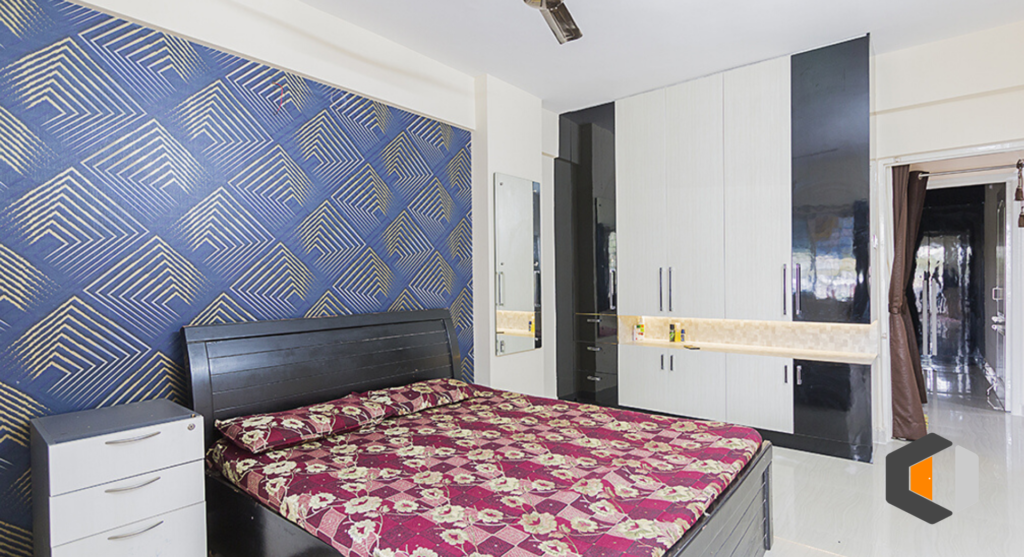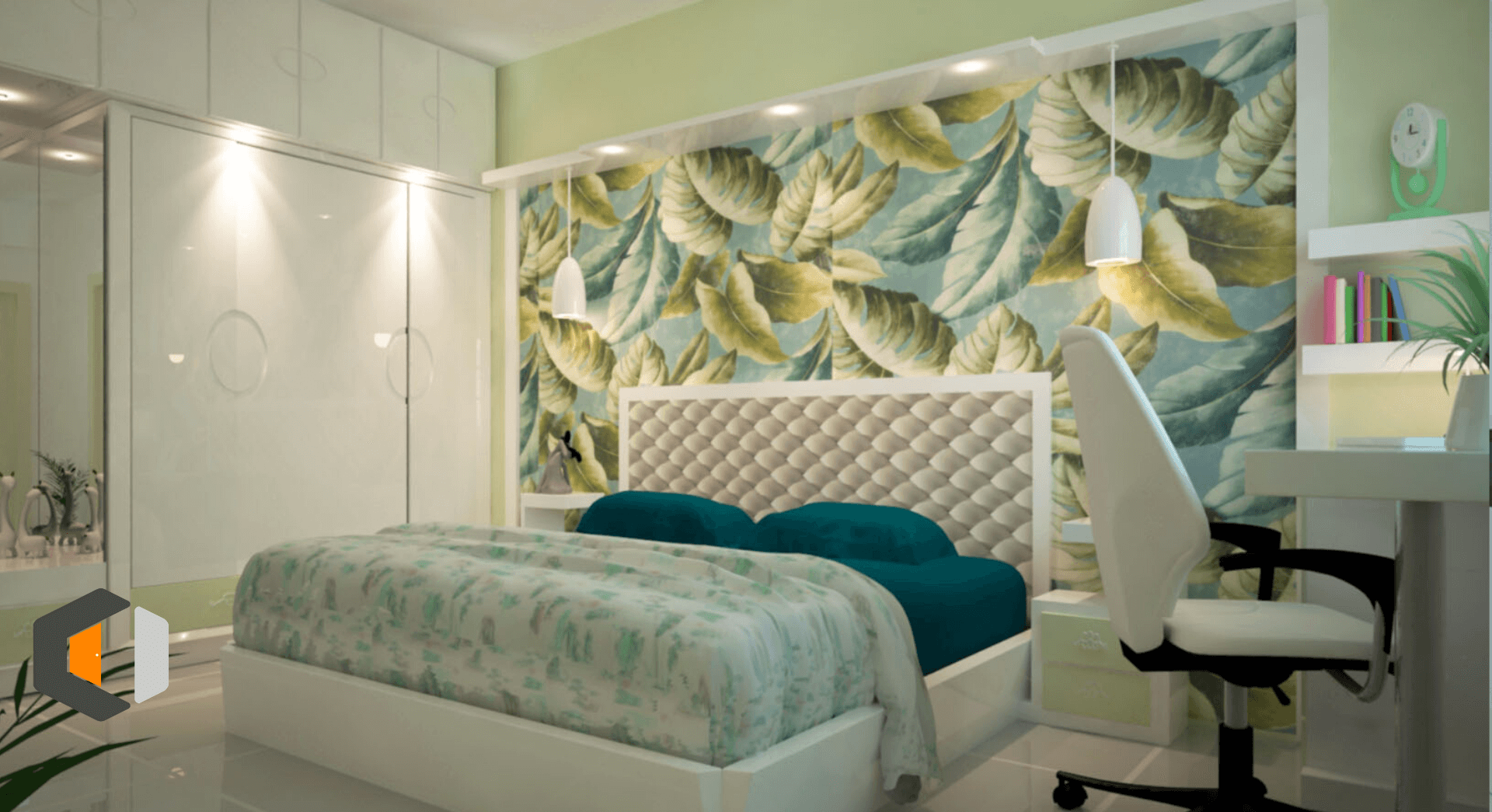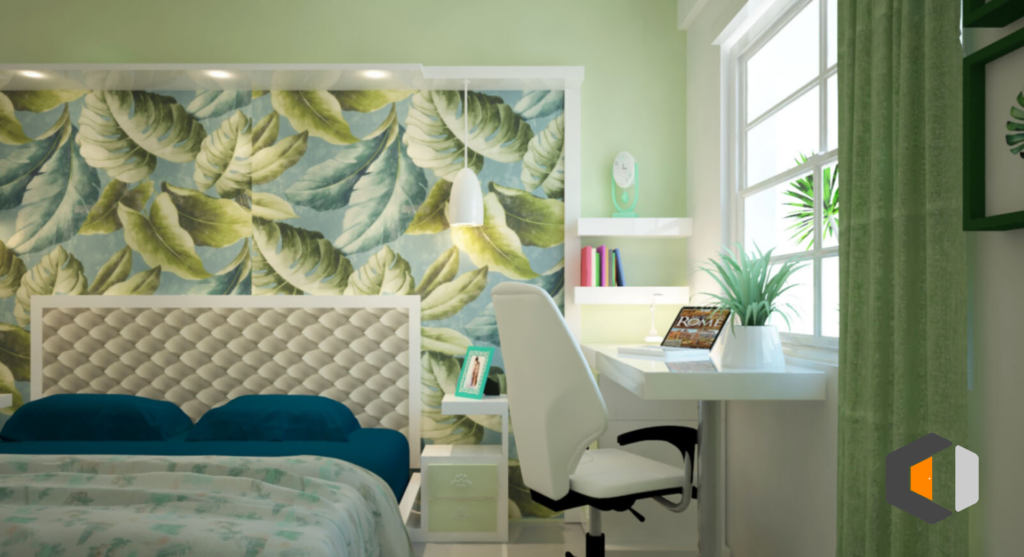Wallpaper Designs
Transform Your Home with Unique Wallpaper Designs
Wallpaper Designs enhance the look of your living space. Wallpaper is a material used in interior decoration to decorate the interior walls of a house. It is usually sold in rolls and is applied onto a wall using wallpaper paste. Wallpapers can come plain as “lining paper” (so that it can be painted or used to help cover uneven surfaces and minor wall defects thus giving a better surface), textured (such as Anaglypta), with a regular repeating pattern design, or, much less commonly today, with a single non-repeating large design carried over a set of sheets. The smallest rectangle that can be tiled to form the whole pattern is known as the pattern repeat.

Wallpaper was a way to bring about a special feel or look to a room, and so homeowners would wallpaper every room, from top to bottom. Then came along the wallpaper border that would be placed at the ceiling, and along the chair rail, even around doors and windows. In time, paint would replace, or at least be matched up with the wallpaper. And in time, painting and paneling would replace the use of wallpaper.
Wallpaper has made a huge comeback in the last few years and has essentially made painted accent walls irrelevant in the design industry. Now it’s all about incorporating texture in clean and sleek ways and wallpaper does just that. Wouldn’t you like to achieve a “wow” look in at least one room of your home? Have you given wallpapering any thought? Yes, it may seem old school, after all, it wasn’t that long ago in the concept of time, that wallpaper was the only way to cover the walls of homes.
Wallpaper Designs can give a room that “wow” feeling and look in the most basic of rooms. It adds character to a room with color, style, and texture. Today though, the colors, the feel, the overall look of wallpaper has transformed. It can give a room a bold and exotic look or bring about comfort and peacefulness. The wallpaper itself can be the art on a wall with the inspiration for design and patterns from the work of famous artists.

How to consider the room you want to use wallpaper?
The process of using wallpaper takes consideration, such as the size of the room. And then the deliberation of choosing the right wallpaper is not one to be taken lightly. To choose the right wallpaper, consider the size of the bedroom, dining room, foyer, living room, or whatever room you’re planning to wallpaper.
Does the living room have a huge, monotonous wall that needs to become a focal, place of interest? Or does the whole room need something to give it depth and design on all four walls? Are you wanting to match it up with color that is already in the room or an adjacent room? Consider what a mix-and-match color theme would add to the room, thus carrying through the rest of the room.
Wallpaper designs available today give us a wide range of colors, patterns, and textures. The dark and small room can seem bigger and brighter with bright, light-colored wallpaper that reflects light. The room will feel and look bigger and brighter. For a windowless room, wallpaper is a great solution. A dark or textured wallpaper brings the walls of a room closer in and should be limited to the larger rooms in a home, especially a paper with floral print or intricate ink design.

- Alter a sense of spaciousness. Unlike a flat, painted surface, many wallpaper patterns have a spatial component that makes a room appear larger or smaller in size, if even a room at all.
Many scenic wallpapers lean on the use of artistic perspective. Objects closest are larger in size and darker in value. Receding away, the imagery diminishes in size and value, or becomes lighter.
- By adding the appearance of volume, shading is another way wallpaper can create a semblance of space. Shading an object makes it look three-dimensional, and this trellis design appears to have thickness.
- Not all wallpaper will make a room look bigger. If the imagery lacks a background, or negative space around it, the room will feel closed in and intimate, especially if the pattern is large.
This can be a good thing if you’re aiming for coziness or a bold statement. If not, the imbalance between positive and negative space can create the feeling of confinement for some folks. Here, lush palm fronds appear to invade the powder room as if it’s part of a dense, tropical jungle.

- Random wallpaper designs also have a sense of energy about them that aren’t found in designs with an obvious, repetitious pattern. The sporadically placed goldfish in this example look as if they might swish by and change direction at any moment.
- Unify or isolate a space. Wallpaper patterns move one’s eye throughout a space, bouncing from one design to another. When installed on all four walls, the experience is continuous, making the entire room visually engaging and cohesive.
